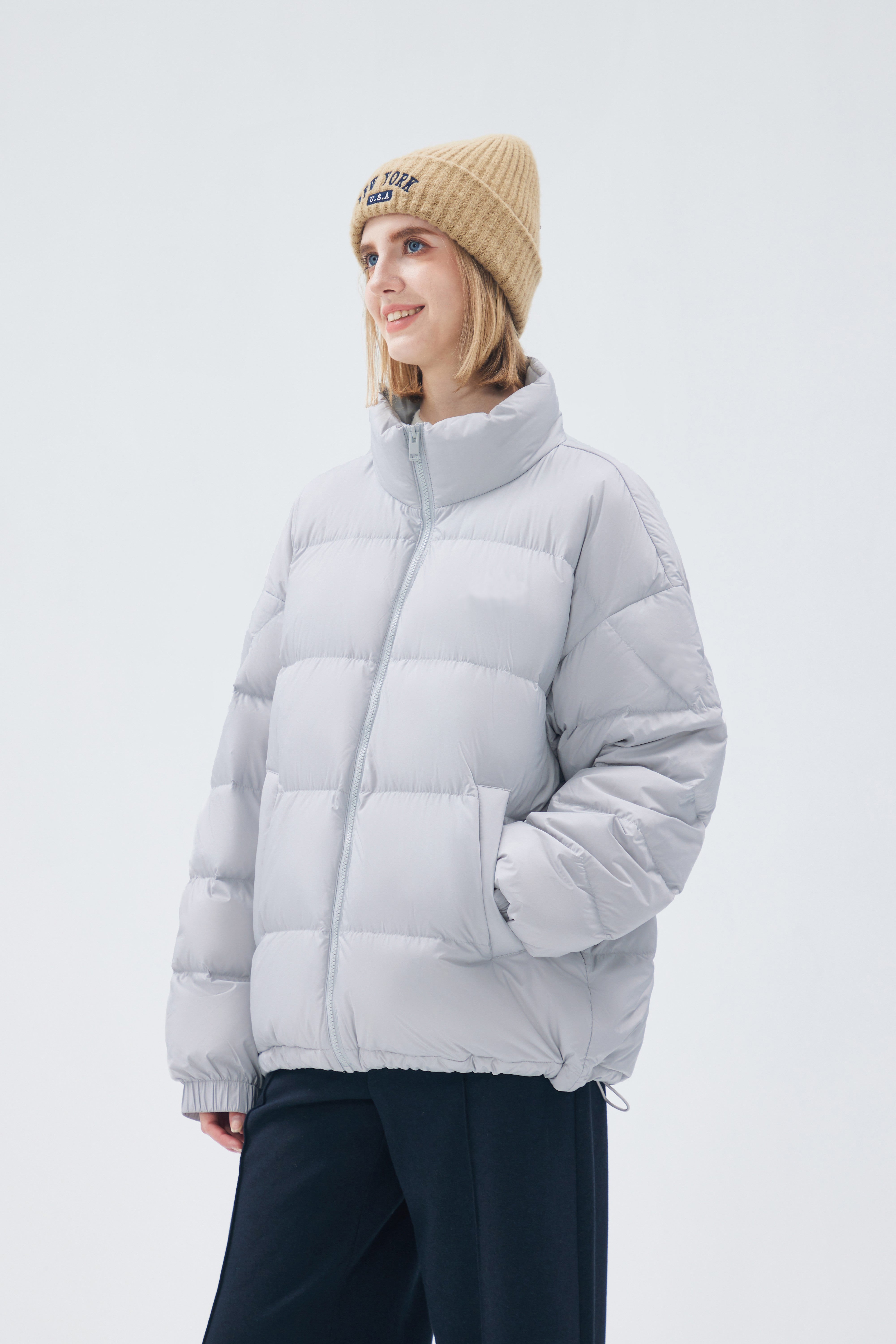
What is better a Down Jacket or a Synthetic filled for warmth?
When it comes to staying warm in cold weather, the choice between a down jacket and a synthetic-filled (Eco-Down) jacket depends on various factors. To make an informed decision, let’s delve into their performance from three critical perspectives: thermal sensation, the physical structure of insulation materials, and the weaving methods of jacket fabrics.
1. Thermal Sensation: The Comfort of Warmth
Introduction:
The feeling of warmth from a jacket is not just about insulation but also how well the material adapts to different temperatures and weather conditions. Both down and synthetic-filled jackets offer warmth, but they excel in different ways.
Down Jackets:
Down jackets are known for their unbeatable warmth-to-weight ratio. The natural down clusters from ducks or geese create a lofty layer that traps body heat effectively, making these jackets feel incredibly warm even in the coldest conditions. Moreover, down jackets compress easily and feel lightweight, which adds to their comfort. However, the primary drawback is that down loses its insulating properties when exposed to moisture, making it less ideal for wet climates.
Synthetic Jackets:
Synthetic insulation mimics the loft of down using polyester fibers designed to trap heat. While synthetic jackets may not feel as light or warm as down in extremely cold, dry environments, they perform consistently in damp or wet conditions. The fibers retain heat even when wet and dry quickly, making them a practical choice for activities like hiking in mixed weather.
Summary:
Down jackets provide superior warmth and comfort in dry, cold climates, while synthetic jackets offer reliable warmth across a wider range of weather conditions, especially when moisture is involved.
2. Physical Structure: Heat Retention Efficiency
Introduction:
The structure of insulation materials determines their ability to trap air and store heat. Both down and synthetic fills have unique designs that affect their performance.
Down Jackets:
The physical structure of down is a marvel of nature. Each cluster comprises thousands of tiny filaments radiating outward, forming numerous air pockets that trap warm air. This natural design allows down to provide exceptional insulation with minimal material. However, when exposed to moisture, the clusters clump together, collapsing the air pockets and reducing heat retention. As a result, the jacket's ability to keep you warm diminishes significantly in wet conditions.
Synthetic Jackets:
Synthetic insulation, often made of polyester fibers, is engineered to replicate down clusters. While it doesn’t achieve the same level of loft or warmth as natural down, it has the advantage of being hydrophobic. The fibers are arranged to maintain their structure even when damp, allowing them to trap heat consistently. Additionally, synthetic fills tend to resist compression better than down, making them a durable choice for long-term use.
Summary:
Down’s intricate structure makes it the ultimate choice for maximum heat retention in dry environments, while synthetic insulation offers more consistent warmth in varying conditions, especially when moisture is present.
3. Fabric Weaving: Outer Material and Warmth Retention
Introduction:
While the insulation material plays a crucial role, the fabric that encases it is equally important. The weaving method of the outer fabric contributes to the jacket's overall warmth, durability, and weather resistance.
Down Jackets:
The outer fabric of down jackets is typically lightweight and tightly woven to prevent the escape of down clusters. These fabrics, often made from ultralight nylon or polyester, are treated with a durable water-repellent (DWR) coating to resist light rain or snow. However, they are not fully waterproof and may soak through in heavy rain. While these lightweight fabrics enhance portability, they are more prone to wear and tear, making them less suitable for rugged outdoor use.
Synthetic Jackets:
Synthetic-filled jackets use outer fabrics that are often thicker and more robust, as synthetic insulation does not require as tight a weave to stay in place. These fabrics are generally more durable and can better withstand abrasion and harsh conditions. Additionally, synthetic jackets are often designed with built-in waterproof or windproof layers, providing extra protection in extreme weather. However, the added durability can make the jacket heavier and bulkier.
Summary:
Down jackets prioritize lightness and portability, making them ideal for activities like alpine trekking, where weight matters. Synthetic jackets, with their sturdy and weather-resistant fabrics, are better suited for rough conditions and versatile outdoor adventures.
Conclusion
Choosing between a down jacket and a synthetic-filled jacket ultimately depends on your priorities and the conditions you expect to encounter. For dry, cold climates where weight and maximum warmth are critical, down jackets are the superior choice. In contrast, synthetic jackets provide consistent warmth, durability, and resilience in wet or unpredictable weather. By understanding the strengths of each option, you can select the jacket that best meets your needs and ensures comfort in any environment.







